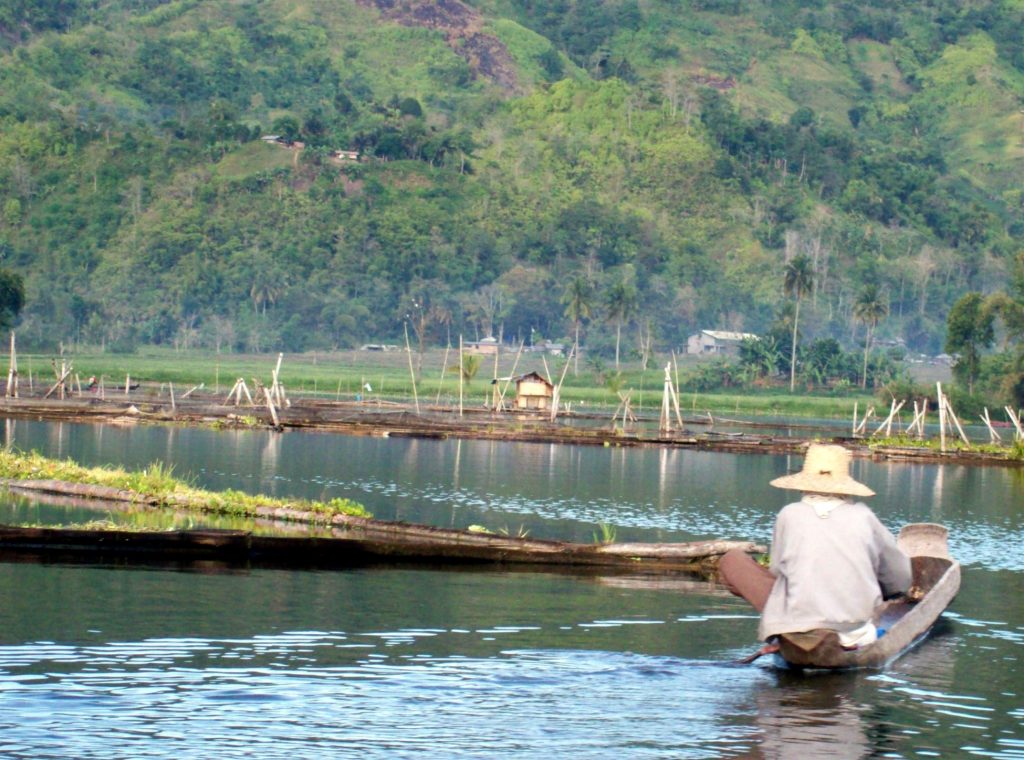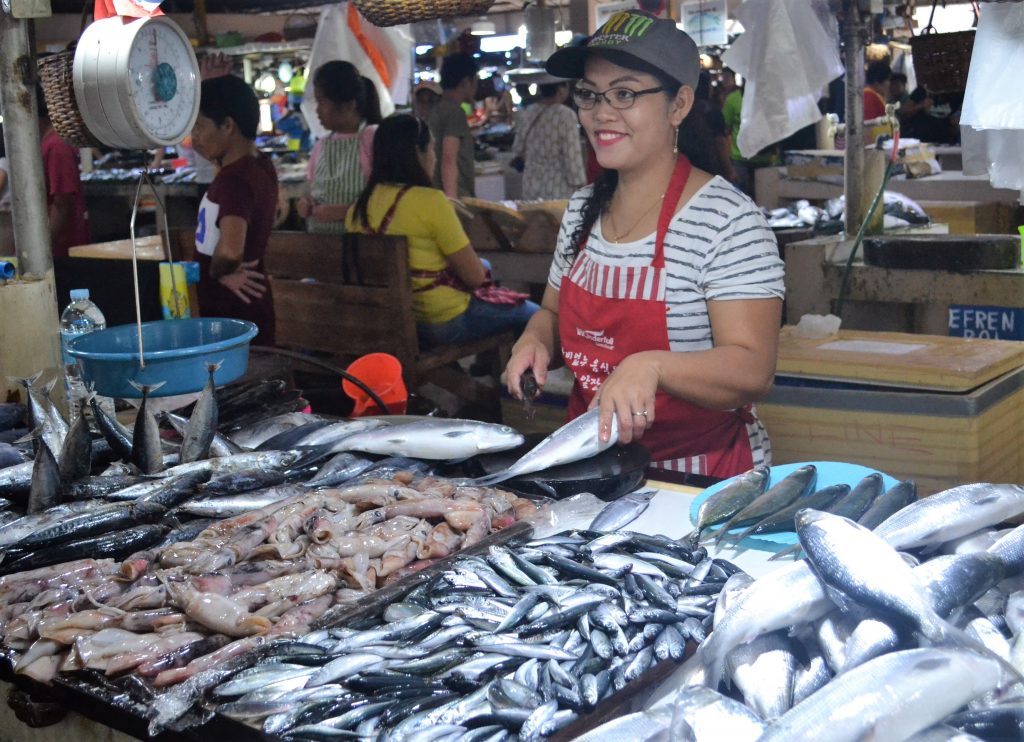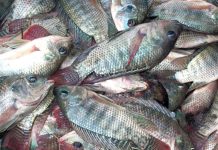“An island nation, the Philippines necessarily depends, to a large extent, on its fishery resources for its food. Fish, which used to be among the cheapest sources of protein, is now more expensive than pork or chicken.” – Senator Loren Legarda
***
Last year, the Philippines imported about 17,000 metric tons of galunggong or round scad, mostly from China and Vietnam. This year, the government will again do so “to contain food prices that pushed inflation to the fastest in almost a decade last year.”
“(Importation) will not fix the real problems that are preventing the Philippines from producing its own food from the sea,” deplored Oceana, the largest international organization working exclusively to protect and restore the world’s oceans, in a press statement issued last January 25.

“Short-term imports may actually put long-term food security and fisherfolk at risk,” said Atty. Gloria Estenzo Ramos, vice president of Oceana Philippines. “The issues haunting fisheries management can only be solved through a more comprehensive and participatory plan.”
Fish importation should have been unheard in this country, which has 7,107 islands outlined by more than 18,000 kilometers of coastline and bordering roughly 70% of the country’s municipalities.
Senator Loren Legarda, in one of her recent speeches, said the country has “about 132 principal rivers throughout the archipelago which drain through the coastal zone measuring 27 million hectares.” Also, the “coastline is indented with several bays and gulfs that can serve as natural harbors” of marine species.
The country’s territorial waters of 220-million hectares can be utilized as fishing ground: about 193.4 million hectares are oceanic waters and the remaining 26.6 million hectares belong the what is called Exclusive Economic Zone.
The Philippines is the eleventh largest fish producer globally, according to the United Nations Food and Agriculture Organization (FAO). But the big hitch: fish production has been decreasing spirally in recent years.
Last year, for instance, the total volume of fisheries production in the country went down by 1.04% compared to the previous year’s level, according to the Philippines Statists Authority (PSA). Output reductions were noted in commercial (6.89%) and municipal (1.05%) fisheries.
The Bureau of Fisheries and Aquatic Resources (BFAR) defines commercial fishing as the catching of fish with the use of fishing boats with a capacity of more than three gross tons for trade, business or profit beyond subsistence or sports fishing.

Municipal fishing covers fishing operation carried out with or without the use of a boat weighing 3 gross tons or less. Inland municipal fishing, on the other hand, is the catching of fish, crustaceans, mollusks and all other aquatic animals and plants in inland waters like lakes, rivers, dams, and marshes.
Commercial fisheries comprised 21.97% of total fisheries production in 2017. “The volume of commercial fisheries production reached to almost 947 thousand metric tons,” the PSA reported. “It diminished by 6.89% from its level a year ago.”
About 26.12% of the total fisheries in the country 2017 was contributed by municipal fisheries. “Municipal fisheries declined by 1.05% and came up with 1.13 metric tons during the year,” the PSA said. “About 85.45% of the volume was credited to unloadings in municipal fish landing centers and the remaining 14.55% was contributed by inland fisheries subsector.”
According to Ramos, the fish in the market has become more expensive due to the downtrend in fish catch and their size has become smaller as fish populations become less productive due to overfishing. “People are aware of this problem,” she said. “The impact on marine biodiversity is not just evident to the scientists, but also to consumers and fisherfolk.”
A survey by the Social Weather Stations commissioned by Oceana in 2017 found that 82% of Filipinos believe fish sold in markets are more expensive now compared to 10 years ago. Meanwhile, 54% of respondents said the size of fish has become smaller and 55% said they found less varieties of fish in local markets compared to a decade ago.
About 56% of Filipinos’ animal protein comes from fish, and 91% of fish caught in-country are consumed domestically, Oceana pointed out. “Not only is fish a vital food source, it also provides livelihood for millions of Filipinos,” it said in its press statement.
But “we are running out of fish and running out of time,” decried Vince Cinches, Oceans Campaigner for Greenpeace Southeast Asia. “For a country known for marine biodiversity, there are very few fish left to catch.”
The reason: majority of fishing grounds in the country are overfished. Recent reports said that ten out of 13 of these are under intense fishing pressure. “Overfishing is the main issue, with today’s fishers ranging farther and trying harder to catch more – but there are too many fishers and too few fish,” observes Gregg Yan, director for Communications of Oceana Philippines.
The Sogod Bay in Southern Leyte is a case in point. Home to a variety of fishes, it is a major fishing ground for the 11 municipalities that surround it. Mangko or frigate tuna (scientific name: Euthynnus affinis) is its major fishery resource. Seasonal influx of this shallow-water tuna species has provided food and livelihood to the people of Sogod and nearby towns.
“Frigate tuna used to abound in Sogod Bay and was a major source of income in the 70’s until the 90’s,” Dr. Salome Bulayog, an associate professor of the department of economics at the Visayas State University, told Philippines Graphic. “But today, fishermen could hardly have fish catch. Fishermen have to spend longer time to catch a kilogram of fish; some even have to farther from the shore.”
Compounding the dilemma is illegal fishing. “(This) remains a huge problem in our country. Commercial fishers continue to enter and illegally fish in municipal waters in unfair competition with the artisanal fisherfolk for the declining fish supply, while foreign fleets poach high-value species,” Ramos said.
Aside from overfishing, there’s the degradation of the country’s marine ecosystems: mangroves, coral reefs and seagrasses.
Mangroves are very important to marine life, fishery expert Dr. Rafael D. Guerrero III points out. They serve as sanctuaries and feeding grounds for fish that nibble on detritus (fallen and decaying leaves) trapped in the vegetation, and on the bark and leaves of living trees.
“(Mangroves) are important feeding sites for many commercially important fish species (mullet, tilapia, eel, and especially milkfish), shrimps, prawns, mollusks, crabs, and sea cucumbers,” says a World Bank report. “Fry that gather in mangrove areas are very important for aquaculture.”

Over the past century, the islands that make up the Philippines have lost nearly three-quarters of their mangrove forests. Panay Island in the Western Visayas is a classic example. It used to be home to over 12,400 hectares of lush mangrove forests. In 1988, only 300 hectares remained.
The country’s coral reefs yield 5 to 37 tons of fish per square kilometer, making them very important to the productivity of fisheries. “And yet, only 1.0% to 2.5% is still intact and serves as habitat for diverse marine flora and fauna; 60% of reefs are heavily damaged,” wrote Sandra Volpp in her paper, “From the Mountains to the Seas,” which appeared in Handbook Philippines.
Seagrasses, which covers an area of 27,282 square kilometers, are also fast disappearing. “If seagrass beds continue to disappear, there will be serious economic and ecological consequences,” the BFAR regional office in Davao City warns.
But there’s a silver lining to all these. “We have highly productive fisheries,” Ramos said. “If managed sustainably, our oceans can feed the growing Philippine population and achieve economic growth and security.”
One possible to the dwindling catch in the open seas is so-called “blue revolution.” If you’re wondering just what it is, just remember the “green revolution” of the past. “Green revolution” refers to a set of research and development of technology transfer initiatives occurring between the 1930s and the late 1960s that increased agricultural production around the world.
The Economist explained it in this manner: “On land, the green revolution allowed dramatic increases in crop production, with increased mechanization, and improved pest control and soil fertility through the addition of herbicides, pesticides and nitrogen-based fertilizers.”
If green is to crops, then blue is to fisheries. “The blue revolution has seen companies breeding fish to improve traits such as their growth rate, conversion of feed into flesh, resistance to disease, tolerance of cold and poor water, and fertility,” the London-based magazine said.
Blue revolution actually refers to aquaculture, the farming of marine animals. Actually, it’s not a new thing. The Philippines has been practicing it. In fact, aquaculture registered 2.24 metric tons in 2017, which gained by 1.68% from its level the previous year, according to PSA.
In February 2015, then President Beningo S. Aquino III signed Republic Act 10654 which amended the 1998 Philippine Fisheries Code. “We call on the government to fully implement the provisions of the amended Fisheries Code,” Ramos urged.
“The said law mandates high penalties for fishing violations, such as illegally fishing within the 15-kilometer municipal waters reserved for smaller-scale fishermen, damaging important and inter-connected habitats like corals, seagrasses and mangroves and using unlicensed fishing gear. It also requires vessel monitoring systems, which will identify and track behavior of commercial fishing boats that are operating within Philippine waters and allow artisanal fishers to maintain access to fishing grounds in their local waters,” said Ramos.
The Oceana official believed there is a vast reservoir of skills, talent and energy of citizens and entities committed to help government sustainably manage the country’s fisheries. “Let’s tap them, involve them in decision-making and engage them as they should be in protecting our oceans and restoring them to vibrancy and good health,” she said.






